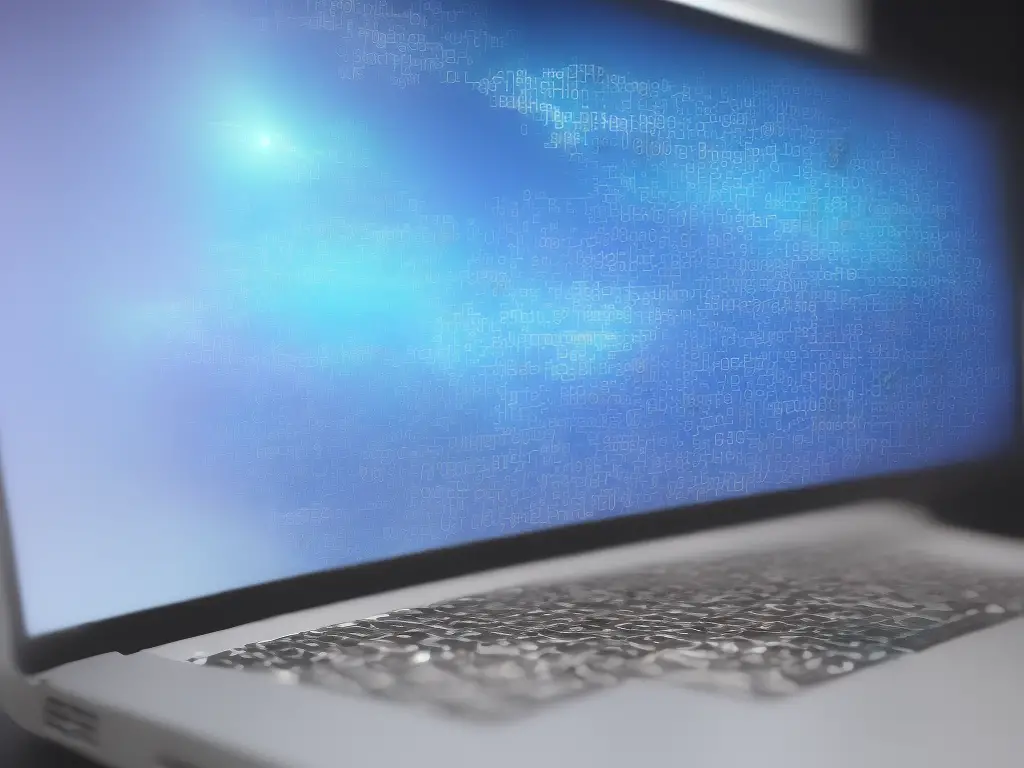Natural Language Processing (NLP) has rapidly become an essential skill for enthusiasts, hobbyists, and professionals alike in the era of data-driven decision-making and advanced artificial intelligence.
The ability to extract meaning, insights, and value from raw, unstructured textual data remains a challenging yet rewarding endeavour.
This essay aims to provide a comprehensive understanding of various NLP techniques and tools, paving the way for anyone interested in diving into this fascinating field.
Introduction to NLP
Table of Contents
- 0.1 Introduction to NLP
- 0.2 Text Preprocessing in Natural Language Processing – How does AgentGPT use it?
- 1 Tokenization in Natural Language Processing and AgentGPT
- 2 Stop Words Removal in Natural Language Processing
- 3 Stemming within the context of NLP
- 4 Lemmatization withing the Natural Language Processing Context
- 5 NLTK (Natural Language Toolkit)
- 6 SpaCy
- 7 Gensim
Natural Language Processing (NLP) can be described as the intersection of artificial intelligence and linguistics, gleaning insights, understanding, and communication between humans and machines through the medium of human language.
As a subfield of computer science and artificial intelligence, NLP deals with automating the interpretation, understanding, and generation of human languages in a way that is both meaningful and useful.
Its primary goal is to enable machines to comprehend, interpret, and glean pertinent information from unstructured data sources such as emails, chat conversations, and social media platforms, and to generate human-like responses.
The methodologies and techniques employed in NLP are plentiful, with many stemming from areas such as computational linguistics, computer science, and machine learning.
Some of the most popular methods include tokenization, part-of-speech tagging, parsing, and named entity recognition, which together allow NLP systems to comprehend and analyze input accurately.
Besides these, NLP systems also incorporate sentiment analysis, text classification, information extraction, and machine translation to generate or translate responses suited to user queries or contextual situations.
In more recent years, the use of deep learning techniques has revolutionized the field of NLP. By harnessing large-scale language models and neural networks, these techniques have improved the ability of machines to capture complex patterns, context, and semantics of human language.
Some significant breakthroughs in this domain include the implementation of recurrent neural networks (RNN), transformer models like BERT (Bidirectional Encoder Representations from Transformers), and GPT-3 (Generative Pre-trained Transformer 3). These advancements have enhanced the capabilities of NLP systems significantly, making them more adept at conversation, question-answering, and summarization.
Natural Language Processing also branches out into various applications that span multiple industries and domains. From customer service chatbots and virtual assistants to sentiment analysis and language translation tools, NLP-powered solutions are becoming increasingly prominent in our daily lives.
Furthermore, NLP systems are used to streamline data extraction, automate content creation, optimize search engines, and even develop tools for computational social science research. This broad range of applications showcases the versatility and value of NLP in overcoming language barriers and facilitating seamless human-machine communication.
Another crucial aspect of natural language processing (NLP) lies in the realm of ethics, as questions surrounding the responsible development and usage of language models arise. Issues related to privacy, data collection, and bias in NLP systems play a significant role in determining the fairness and transparency of the technology.
As the field of NLP continues to grow and evolve, researchers and practitioners must remain vigilant in addressing these ethical challenges, ensuring that technology serves as a force for good and does not perpetuate harmful biases or stereotypes.
Overall, natural language processing is a fascinating and ever-evolving area that offers both opportunities and challenges and remains integral to the future of human-machine interaction.
Text Preprocessing in Natural Language Processing – How does AgentGPT use it?
One of the essential steps in the development and application of NLP is text preprocessing, which is also significant in the field of natural language understanding (NLU). Text preprocessing involves a series of techniques used to clean and prepare raw text data for further analysis and processing.
The primary goal of this step is to convert unstructured text data into a structured format, making it easier for machine learning algorithms to understand and draw meaningful insights from the text.
By adequately addressing the ethical challenges in NLP and effectively utilizing text preprocessing techniques, we can ensure that this technology continues to grow and contributes positively towards human-machine interactions.
Tokenization in Natural Language Processing and AgentGPT
One of the essential steps in text preprocessing is tokenization. Tokenization is the process of breaking down a large paragraph into smaller chunks or tokens, such as words or sentences. This process allows the algorithm to focus on individual words or phrases, making it easier to identify patterns and relationships within the text.
Tokens can be created using various approaches, such as whitespace, punctuation, or special characters, depending on the specific requirements of the project.
Stop Words Removal in Natural Language Processing
Another key aspect of text preprocessing is the removal of stop words. Stop words are common words, such as “a,” “an,” “and,” “the,” and “is,” which do not significantly contribute to the meaning of a sentence.
Since these words are often found in large quantities in any given text, removing them can significantly reduce the amount of data that needs to be processed. By doing so, it not only speeds up the analysis but also improves the accuracy and efficiency of the NLP tasks.
Stemming within the context of NLP
Stemming is a text preprocessing technique that aims to reduce words to their root form. This process allows for the grouping of similar words, which can be beneficial when analyzing and understanding text data. For example, the words “running,” “ran,” and “runner” all stem from the same root word, “run.”
By transforming these words into their root form, the algorithm can more accurately identify patterns and relationships between terms, leading to improved results in NLP tasks such as text classification or sentiment analysis.
Lemmatization withing the Natural Language Processing Context
Lemmatization, on the other hand, is a more sophisticated technique that involves converting words into their base forms or lemmas, considering the morphological analysis of the text. Unlike stemming, lemmatization takes into account the context and part of speech, which results in a more accurate reduction of words to their root forms.
For instance, the word “better” would be transformed into “good” when lemmatizing, while stemming might only remove the suffix to produce the root word “bet.”
In conclusion, text preprocessing techniques like tokenization, stop word removal, stemming, and lemmatization are vital to transforming raw text data into a structured format that can be easily understood and analyzed by machine learning algorithms.
These methods enhance the efficiency, accuracy, and overall effectiveness of NLP and NLU tasks, such as text classification, sentiment analysis, and information extraction. As an enthusiast or hobbyist in natural language processing and understanding, mastering these text preprocessing techniques is critical for building a strong foundation and developing more advanced NLP and NLU applications.

Regular Expressions in NLP
One essential skill to acquire in this journey is learning to use regular expressions, often abbreviated as regex. Regular expressions are a potent tool for pattern matching and text manipulation in the world of NLP and NLU.
This versatile technique allows you to search, manipulate, and parse large volumes of textual data efficiently. By utilizing various syntactic rules and special characters, regular expressions enable you to define a specific pattern for locating a sequence of characters within a text.
This capability leads to an array of potential applications in NLP and NLU, including tokenization, information extraction, and data validation.
An essential step in NLP is tokenization, which is the process of breaking down a piece of text into smaller units called tokens. Often, these tokens are words, phrases, or other meaningful elements.
Regular expressions can be employed to tokenize text, as they can match patterns relevant to the task, such as word boundaries, punctuation, and whitespace. With regular expressions, one can create concise and precise rules for delimiting tokens in text, leading to improved accuracy in subsequent NLP tasks.
Information extraction is another crucial aspect of NLP where regular expressions excel. These extractions may include retrieving key pieces of data such as names, dates, email addresses, or phone numbers from unstructured text.
Regular expressions enable you to define patterns that accurately match the desired information while ignoring irrelevant data. In this way, regex simplifies the extraction process and helps automate it, making it a popular choice for information extraction in NLP applications.
Data validation is also an area where regular expressions come in handy for NLP and NLU. Often, you need to ensure that the input data adheres to specific formatting rules or contains specific types of information.
Regular expressions can be employed to validate the data by ensuring that predefined patterns and constraints are followed. This step can help identify inconsistencies, errors, or potential issues in the input data before it is fed into a natural language processing pipeline.
Detecting and correcting errors is an area where regular expressions excel. In the preprocessing stage of natural language processing (NLP), it’s crucial to identify and fix spelling mistakes, inconsistent capitalization, and formatting issues.
Regular expressions (regex) can be used to detect and correct these anomalies, enhancing the quality of the text before it is further processed by NLP algorithms. By leveraging its pattern-matching capabilities, regex provides an efficient and flexible solution for managing text in various natural language processing and natural language understanding tasks.

Syntactic Analysis
In NLP, syntactic analysis is essential for understanding and interpreting sentence structures. Numerous methods have been developed to break down and analyze the components of a sentence, each with its unique set of principles and algorithms.
Context-free grammars, dependency parsing, and constituency parsing are some of these approaches. They allow NLP systems to unveil the relationships between words and phrases within a sentence, leading to a more accurate interpretation of the text. The application of these techniques, in conjunction with error detection and correction through the regex, enables the seamless processing of language by NLP systems.
Context-free grammars (CFGs) are a widely used formalism for syntactic analysis, providing a convenient way to represent syntax rules in a structured and hierarchical manner. These grammars consist of a set of production rules that describe how to generate syntactically correct sentences from a given vocabulary.
The rules define a hierarchical structure in which sentences are divided into non-terminal symbols, which eventually derive into terminal symbols or words. Parsing algorithms like the Earley parser or the CYK algorithm can then be applied to determine if a sentence conforms to a given CFG. In NLP, CFGs are often employed within probabilistic models that account for the likelihood of different parse trees.
Dependency parsing, on the other hand, is an approach that aims to represent the grammatical relationships between words in a sentence as a directed graph or tree. Each word is considered a node, and the links between nodes represent syntactic dependencies, such as subject-verb or noun-adjective relations.
Dependency parsing algorithms, like the Eisner algorithm or the transition-based parsers, operate by constructing a parse tree that optimally captures these relations while abiding by certain constraints, such as projectivity or planarity. Dependency representations are particularly valuable in NLP applications that require fine-grained semantic analysis, like machine translation or information extraction.
In contrast, constituency parsing focuses on capturing the hierarchical grouping of words and phrases in a sentence, also referred to as phrase structure or constituency structure. Constituency parsers create parse trees where each internal node corresponds to a syntactic category (such as noun phrase or verb phrase) and the leaves represent the words themselves.
The parsing process aims to find the most appropriate structure based on linguistic rules and principles, sometimes incorporating probabilistic models as well. Commonly used constituency parsing algorithms include the CKY parser and its variants, as well as the Chart parser.
Incorporating syntactic analysis techniques into NLP systems can greatly enhance their language understanding capabilities, leading to more accurate and insightful processing of textual information.
By utilizing context-free grammar (CFGs), dependency parsing, and constituency parsing techniques, researchers and engineers have developed advanced models and applications that can handle complex tasks, such as natural language understanding, question answering, and text summarization. The syntactic analysis will remain a critical component of NLP’s ongoing evolution as algorithms and models in this domain continue to advance.

Semantic Analysis
In addition to syntactic analysis, semantic analysis plays a vital role in the fields of Natural Language Processing (NLP) and Natural Language Understanding (NLU). It enables computers to decipher the meaning of words and phrases within a given context, helping machines better comprehend human language.
This improved understanding aids various applications such as machine translation, text summarization, and sentiment analysis. Techniques involved in semantic analysis include word sense disambiguation, semantic role labelling, and coreference resolution, which collectively assist machines in grasping a comprehensive understanding of textual data.
Word sense disambiguation (WSD) is one of the most significant challenges in NLP and NLU, as it resolves the ambiguity that arises when a single word has multiple meanings. It involves identifying the correct sense of a word in context and considering the relationships among words in a sentence or a text.
WSD employs methods such as supervised classification, unsupervised clustering, and knowledge-based approaches to determine the most suitable meaning for a given word, which eventually improves the performance of NLP systems.
Another vital technique, semantic role labeling (SRL), aims at identifying the semantic roles of words within a sentence. These roles represent the underlying relationships between the main constituents of a sentence, typically revolving around a verb or an event.
An example of these roles includes agents, patients, instruments, and goals. SRL models employ supervised learning techniques to extract these relationships from a given utterance, allowing the machine to gain a deeper understanding of the semantic structure of the expression, which eventually leads to improved performance in various NLP tasks.
Coreference resolution, on the other hand, deals with identifying the referential expressions in a text that co-refer to the same real-world entity. It plays an essential role in understanding textual information, as it enables machines to trace different mentions of an entity back to their original source.
This process involves determining whether two expressions point to the same entity, such as a person, an organization, or a location. Coreference resolution techniques include linguistic heuristics, rule-based approaches, and machine learning methods, which contribute to the development of coherent and comprehensible NLP systems.
Another critical aspect of semantic analysis involves studying the relationships between different words, phrases, and sentences in a body of text. Techniques such as dependency parsing and distributional semantics help to identify related concepts and map out meaningful connections within language data.
By examining and interpreting these relationships, it is possible to construct more accurate and effective NLP models, which in turn enhances machine understanding of human language and paves the way for more natural interaction between humans and machines.

NLP Libraries and Tools
Taking advantage of this foundation, Natural Language Processing (NLP) has become an essential area of artificial intelligence, focusing on enabling computers to understand, interpret, and generate human language.
To achieve this, researchers and developers utilize various NLP libraries and tools that streamline and facilitate the implementation of NLP tasks. Some of the most widely-used libraries include NLTK (Natural Language Toolkit), SpaCy, and Gensim, each offering a range of tools and functionalities to work efficiently with text data and further harness the power of semantic analysis.
NLTK (Natural Language Toolkit)
NLTK is one of the most well-known libraries in the NLP realm. It is a powerful Python library widely used for working with human language data. It provides easy-to-use interfaces to over 50 corpora and lexical resources such as WordNet, along with a suite of text-processing libraries for classification, tokenization, stemming, tagging, parsing, sentiment analysis, and other linguistic tasks.
Many developers prefer NLTK due to its comprehensive support for various NLP tasks, making it an ideal choice for beginners in the field.
SpaCy
SpaCy is another popular Python library designed specifically for production use, focusing on speed and ease of use. It provides functionality for various NLP tasks, such as part-of-speech tagging, entity recognition, and dependency parsing, among others.
Its key feature is the ability to handle large-scale text processing efficiently, which is essential in real-world applications. Furthermore, SpaCy offers pre-trained statistical models and word vectors, making it easier for developers to get started quickly while ensuring optimal accuracy in their NLP tasks.
Gensim
Gensim is an open-source Python library specifically designed for working with vector space modelling and topic modelling tasks. This library is particularly useful for unsupervised text analysis, such as determining semantic relationships between words or documents, as well as reducing the complexity of textual data through techniques like Latent Semantic Analysis (LSA) or Latent Dirichlet Allocation (LDA).
Gensim’s efficient algorithms and scalability make it a popular choice for applications ranging from academic research to business analytics.
As an enthusiast or hobbyist aiming to become proficient in natural language processing (NLP), it’s crucial to understand the capabilities and limitations of various NLP libraries and tools. Experimenting with NLTK, SpaCy, and Gensim will provide you with valuable hands-on experience in text processing and analysis tasks, significantly enhancing your skills in the field.
Considering that the right toolset for each NLP project depends on the specific requirements and objectives, familiarizing yourself with a wide range of libraries and tools is essential for your continued growth and success in NLP.

Machine Learning for NLP
Machine learning (ML) has played a major role in the rapid advancement of natural language processing (NLP) and natural language understanding (NLU) over the past few years. NLP focuses on enabling computers to process and analyze human-generated textual data, while NLU goes a step further to understand the semantics and intent behind the text.
ML techniques have been instrumental in realizing these goals, incorporating a range of algorithms to enhance language prediction, text classification, sentiment analysis, and many other practical applications. By mastering these ML techniques, you’ll be well on your way to becoming a skilled NLP practitioner.
There are two primary approaches to ML-based NLP: supervised and unsupervised learning. Supervised learning involves training models on labelled datasets, i.e., data samples that have been annotated with relevant information like the correct classification, sentiment, or topic.
This approach allows the model to learn by example, iteratively improving its ability to make accurate predictions based on the ground truth provided. Common techniques used in supervised learning for NLP include Support Vector Machines (SVM), Naive Bayes, and deep learning methods, such as Recurrent Neural Networks (RNN) and Transformers.
On the other hand, unsupervised learning does not rely on labelled datasets. Instead, it seeks to discover patterns, relationships, and structures within the data by leveraging algorithms that are designed to learn from the inherent structure of the text.
Dimensionality reduction techniques like Principal Component Analysis (PCA) and clustering algorithms like K-means or hierarchical clustering are some prime examples of unsupervised learning methods employed in NLP. These techniques have been used for topic modelling, text similarity analysis, and sentiment analysis without requiring explicit training on annotated data.
Apart from the supervised and unsupervised learning techniques, there are also semi-supervised learning methods that combine the benefits of both approaches. In semi-supervised learning, a small amount of labeled data is combined with a larger amount of unlabeled data.
This approach can alleviate the need for a large labeled dataset, which can be time-consuming and costly to create. Techniques, such as self-training, multi-view learning, and co-training, have been applied in the NLP domain for tasks such as part-of-speech tagging, sentiment analysis, and text classification.
Recently, advancements in Natural Language Processing (NLP) have been driven by the emergence of deep learning techniques that utilize large-scale neural network architectures to automatically learn meaningful representations of text.
Significant architectures like the Transformer have revolutionized the field, leading to state-of-the-art models such as BERT, GPT-3, and T5. These pre-trained models can be fine-tuned for specific NLP tasks with relatively small amounts of labeled data, resulting in substantial improvements in performance across various applications.

Deep Learning for NLP (Natural Language Processing)
Deep learning, a subset of machine learning focusing on neural networks with multiple layers, has played a crucial role in the progress of NLP. By allowing models to learn intricate patterns from vast amounts of data, deep learning has made it possible to tackle complex linguistic problems.
In order to address NLP tasks such as machine translation, sentiment analysis, and text summarization, specific deep learning architectures like Recurrent Neural Networks (RNNs), Long Short-Term Memory (LSTM) networks, and the previously mentioned Transformers have been developed, further propelling the field forward.
Recurrent Neural Networks (RNNs) represent one of the earliest deep learning architectures used in NLP. RNNs are designed to work efficiently with sequence data, as they maintain a hidden state that captures information from previous time steps, essentially allowing the network to possess a form of memory.
This feature makes RNNs particularly useful for NLP tasks that involve sequential input, such as text. However, they struggle with long-term dependencies due to the vanishing or exploding gradient problem, which limits the effectiveness of the network in processing lengthy text sequences.
Long Short-Term Memory (LSTM) networks were developed as a solution to the problems faced by RNNs when handling long-range dependencies. Although still a type of RNN, LSTMs contain a more sophisticated gating mechanism that enables the model to better control its memory, deciding what information to retain and discard at each time step.
This innovation allows LSTMs to effectively learn from longer sequences of text and achieve superior performance in various NLP tasks, including machine translation and sentiment analysis.
The Transformer architecture, introduced by Vaswani et al. in 2017, marks a significant departure from RNNs and LSTMs in that it abandons the sequential nature of these models for a more parallelizable structure. Transformers utilize self-attention mechanisms, which enable the model to weigh each word’s contribution to the understanding of all other words in a given sentence.
This results in significantly improved context awareness and allows the model to handle long-range dependencies more effectively than RNNs or LSTMs. The Transformer architecture forms the basis of many state-of-the-art NLP models such as BERT and GPT-3.
In conclusion, the advancement of deep learning techniques and the development of specialized neural network architectures, such as RNNs, LSTMs, and Transformers, have significantly contributed to progress in various natural language processing (NLP) tasks.
These models continue to push the boundaries in the field, opening up new opportunities for applications in natural language understanding and generation. As research progresses, further innovations are likely to enhance the performance and capabilities of deep learning-based NLP models.

Information Retrieval in Natural Language Processing
One key aspect of NLP and understanding is information retrieval, which aims to locate relevant documents or information from a large collection based on user queries.
The study of information retrieval principles complements the advancements made in deep learning techniques, as it helps improve the interaction between humans and computer systems by providing more accurate search results. As both fields continue to develop, the seamless integration of these technologies will pave the way for increasingly sophisticated and user-friendly NLP applications.
One of the primary aspects of information retrieval is building effective search engines. This involves creating algorithms that can process and understand a user’s query and return the most relevant results from a database.
In NLP, search engines need to be able to understand the nuances of human language, including its syntax, semantics, and context. This understanding allows the search engine to provide better query results by recognizing synonyms, variations, and related terms.
Indexing is another crucial aspect of information retrieval. It refers to the process of organizing and structuring the information in a database or a collection of documents, such that it can be easily retrieved by the search engine.
In the context of NLP, an indexing system should be capable of handling diverse document formats and languages, as well as recognizing and extracting relevant entities, keywords, and topics. This ensures faster and more accurate retrieval of documents based on user queries. Effective indexing techniques can significantly improve the performance and usability of an NLP-driven search engine.
Ranking documents is the process of determining the relevance and importance of a document in response to a user’s query. This is accomplished using various algorithms that take into account factors such as term frequency, inverse document frequency, and the overall structure of the document.
In NLP, document ranking techniques also need to comprehend the contextual relationships between words and concepts to better understand the document’s relevance to a user’s query. This requires extensive knowledge of natural language semantics and the use of advanced algorithms to rank documents accurately and efficiently.
In summary, understanding information retrieval methods is crucial in the field of Natural Language Processing (NLP) and natural language understanding. Delving deeper into search engine construction, indexing techniques, and document ranking allows researchers and enthusiasts to contribute to developing more effective and human-like communication between people and computer systems.
Investing time and effort in grasping these principles is essential for advancing NLP and unlocking its full potential.

Project and Practical Applications of Natural Language Processing (NLP)
One of the most effective ways to develop your skills in NLP is by working on a project or case study centred around a real-world problem. This practical approach not only solidifies your understanding of various techniques and challenges associated with NLP but also showcases your ability to apply these concepts in real-life applications.
By connecting the theory with hands-on experience, you can make significant strides in your NLP journey, ultimately bridging the gap between people and computer systems.
A project that showcases the use of NLP techniques can be designed around the automated analysis of customer support tickets in a company. This real-world problem could require the extraction of relevant information from customer complaints or issues reported, followed by a classification of these concerns into various categories based on their nature.
This would allow the company to address these concerns more efficiently and allocate resources effectively. Implementing this project would involve tasks such as text preprocessing, feature extraction, and machine learning model development for text classification.
Throughout this process, you will be able to utilize and refine your skills in various NLP techniques, facilitating a better understanding of these concepts. Another intriguing and practical application can be found in determining the sentiment of social media comments and posts related to a certain brand, product or service.
By using NLP techniques such as sentiment analysis and text classification, you can obtain insights into public opinion about a specific topic, allowing organizations to make informed decisions based on these sentiments. This project can involve data collection from social media platforms, text preprocessing, and training of a sentiment analysis model.
As you work with live data and real user-generated content, you will gain experience working with unstructured, noisy data and learn best practices for managing and processing such information.Creating a chatbot or virtual assistant is another exciting project you may consider. In this application, NLP enables communication between humans and machines in natural language, allowing users to interact with the chatbot in a conversational manner.
Developing a chatbot involves understanding and processing user input, incorporating intents and entities, and generating appropriate responses based on the given context. This project not only showcases your proficiency in NLP techniques like text analysis and intent recognition but also provides an opportunity to explore natural language generation (NLG), a key aspect of NLP responsible for creating human-like responses.
Machine translation is another compelling application of NLP that is relevant in today’s globalized environment. The aim of this project would be to develop a system that automatically translates text from one human language to another. This could be accomplished using techniques such as neural machine translation and sequence-to-sequence modeling, both of which are essential components of modern NLP.
By working on a machine translation project, you will gain valuable experience in handling complex language structures, understanding contextual nuances, and refining the translation model to generate accurate results. In all these projects and applications, the common thread is that the learner is exposed to various NLP techniques and challenges within the context of a real-world problem.
This hands-on experience allows for a deeper understanding of NLP concepts and demonstrates a learner’s ability to apply their skills in practical situations.

By exploring the various aspects of Natural Language Processing, from basic concepts to advanced methodologies, this essay has provided a strong foundation for anyone seeking to embark on a journey into the world of Natural Language Processing (NLP).
It is important to remember that continuous learning and experimentation will further enhance one’s skills and understanding. By embracing the potentially transformative power of NLP technologies and machine learning, enthusiasts and hobbyists can contribute towards finding innovative solutions to real-world challenges and shaping the future of NLP applications.

I’m Dave, a passionate advocate and follower of all things AI. I am captivated by the marvels of artificial intelligence and how it continues to revolutionize our world every single day.
My fascination extends across the entire AI spectrum, but I have a special place in my heart for AgentGPT and AutoGPT. I am consistently amazed by the power and versatility of these tools, and I believe they hold the key to transforming how we interact with information and each other.
As I continue my journey in the vast world of AI, I look forward to exploring the ever-evolving capabilities of these technologies and sharing my insights and learnings with all of you. So let’s dive deep into the realm of AI together, and discover the limitless possibilities it offers!
Interests: Artificial Intelligence, AgentGPT, AutoGPT, Machine Learning, Natural Language Processing, Deep Learning, Conversational AI.

